Tokumeikan is one of the premier organizations in North America dedicated to the study and promotion of kenjutsu (classical Japanese swordsmanship). We specialize in the ancient art of Japanese swordfighting.
Created in 1994 from very humble beginnings, Tokumeikan has grown to now encompass branch dojos in the Greater Toronto Area, as well as affiliated dojos throughout North America (Canada, the US, Mexico) and Europe (Italy, Spain).
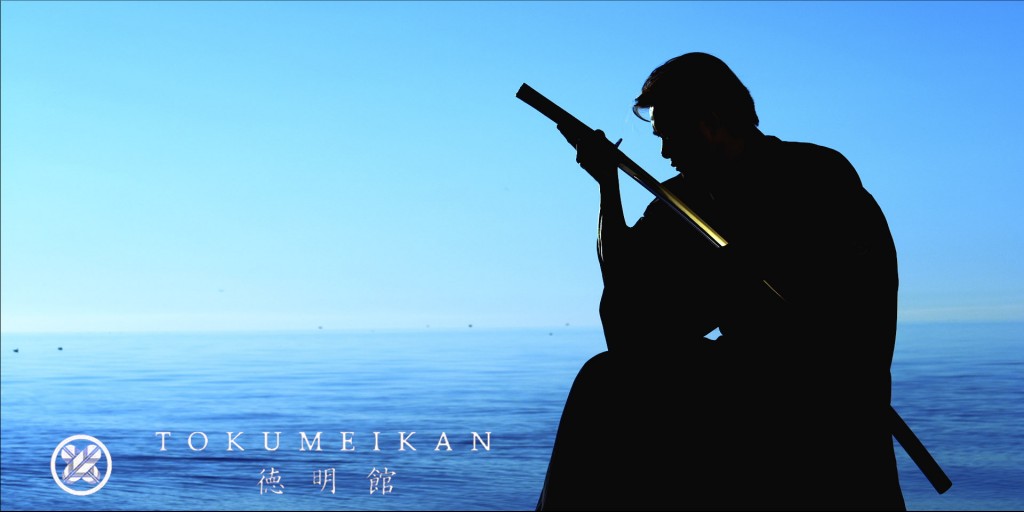
Tong Sensei said in his Welcome Address for the inaugural Tokumeikan Online Gasshuku in 2020:
“Wow. I suppose that one word sums up the unbelievable ride that has been Tokumeikan over the past 26 years. I can still vividly remember our first class in the tiny gymnasium of a small local public school in St. Catharines, Ontario with 2 students in 1994. Little did I know that by 2020, we would have affiliated dojos spread through North America, and breaking new ground in Europe. It is truly amazing.
Many things have changed over those 26 years. From our humble beginnings practicing and building a base through the study of Katori Shinto Ryu, to our formative years where we embarked on a new adventure embracing the Yagyu style, it has always been done with a view to our continual growth as an organization and as students of budo. I guess that we really try to epitomize what our master Kajitsuka Sensei said about budo training: “Budo is like climbing a mountain. Everyone is climbing up the same mountain. However, you must realize that I am still myself going up this mountain.” We are still climbing that mountain but now we have many more friends with us on the journey. That one magnificent quote has stuck with me over the years and guides me to this day.
The strength of our group is our people. I never forget that. We have grown because of our people: their energy, their enthusiasm, and their spirit. I welcome that enthusiasm and I hope that you will all see our spirit throughout this Gasshuku. A Gasshuku is a special training camp. In my mind, however, it is also a celebration of who we are and what we do. So, welcome everyone to our little celebration and I hope that you will enjoy this special opportunity to try out what we do. Cheers!”

This is the spirit of Tokumeikan. We hope you can join us.
———————————————————————————————————-
Affiliation
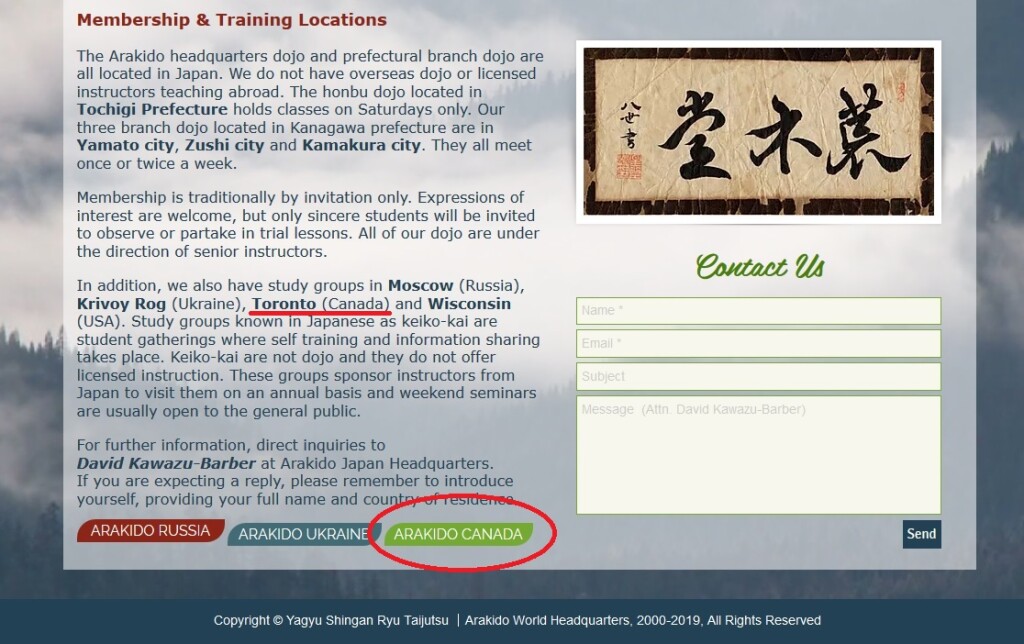
We are an authorized group of practitioners that trains in Yagyu Shinkage Ryu kenjutsu (the Yagyu school of swordsmanship), one of Japan’s greatest schools of swordsmanship. The Yagyu were a family of daimyo (feudal lords) and were the swordsmanship teachers to the Tokugawa shoguns.
We are proud to be the first and only official study group (keiko-kai) in Canada for the Ohtsubo line of Yagyu Shinkage Ryu. We are also proud to be one of only two official study groups in North America. We are authorized by and follow the direction of Kajitsuka Yasushi Sensei.
Kajitsuka Sensei and members of his organization demonstrating at the 2016 Asakusa Embutaikai in Tokyo. Video courtesy of Cliff Judge.
Master Kajitsuka’s group Arakido is famous in Japan. They appear annually at all the major demonstrations of classical martial arts throughout Japan, such as the Nippon Budokan Embutaikai, the Asakusa Embutaikai, the Meiji Jingu Embutaikai, and the Kashima Jingu Embutaikai among many others.
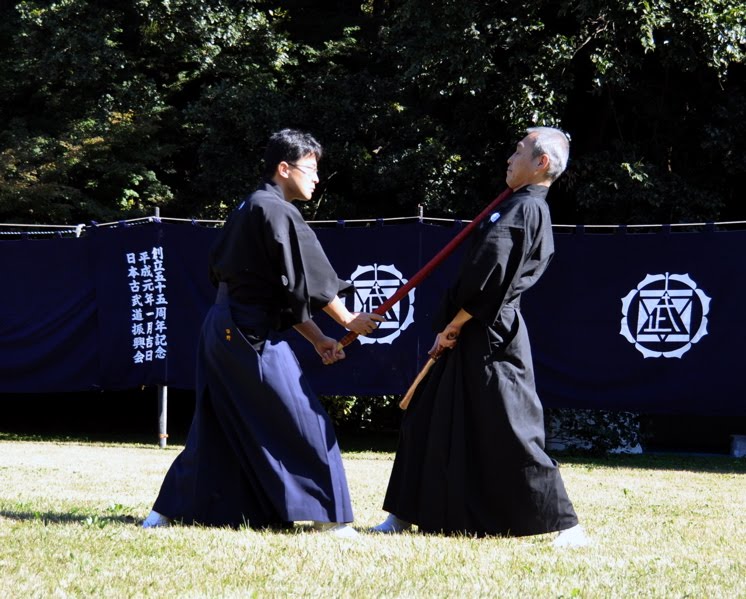 Members of Arakido demonstrate Yagyu Shinkage Ryu at the Meiji Jingu Embutaikai in Tokyo.
Members of Arakido demonstrate Yagyu Shinkage Ryu at the Meiji Jingu Embutaikai in Tokyo.
Master Kajitsuka visits our group on an annual basis. Members of our group have the unique opportunity to apply for official membership with Kajitsuka Sensei’s organization once they demonstrate commitment to the art.
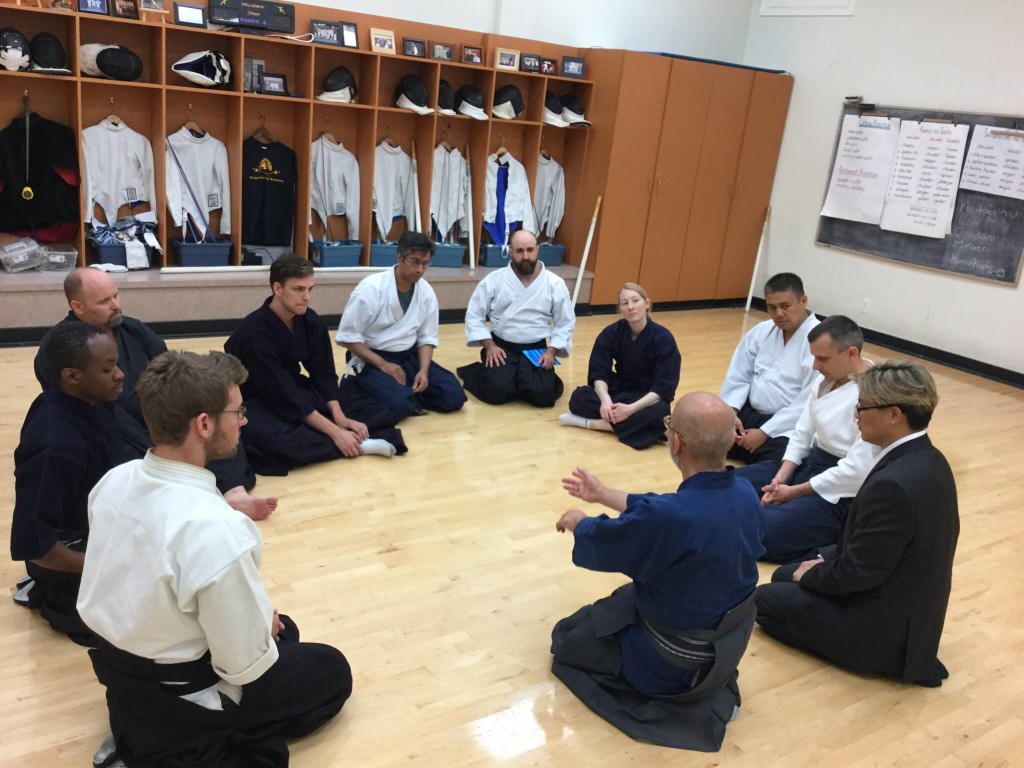 Our Headmaster Kajitsuka Sensei visiting his Canadian keikokai in Toronto in 2016.
Our Headmaster Kajitsuka Sensei visiting his Canadian keikokai in Toronto in 2016.
We are very fortunate that Master Kajitsuka is willing to travel so far to come and teach us. And we are extremely grateful and cannot thank him enough that he takes time out of his busy schedule to come all the way around the world to see us.
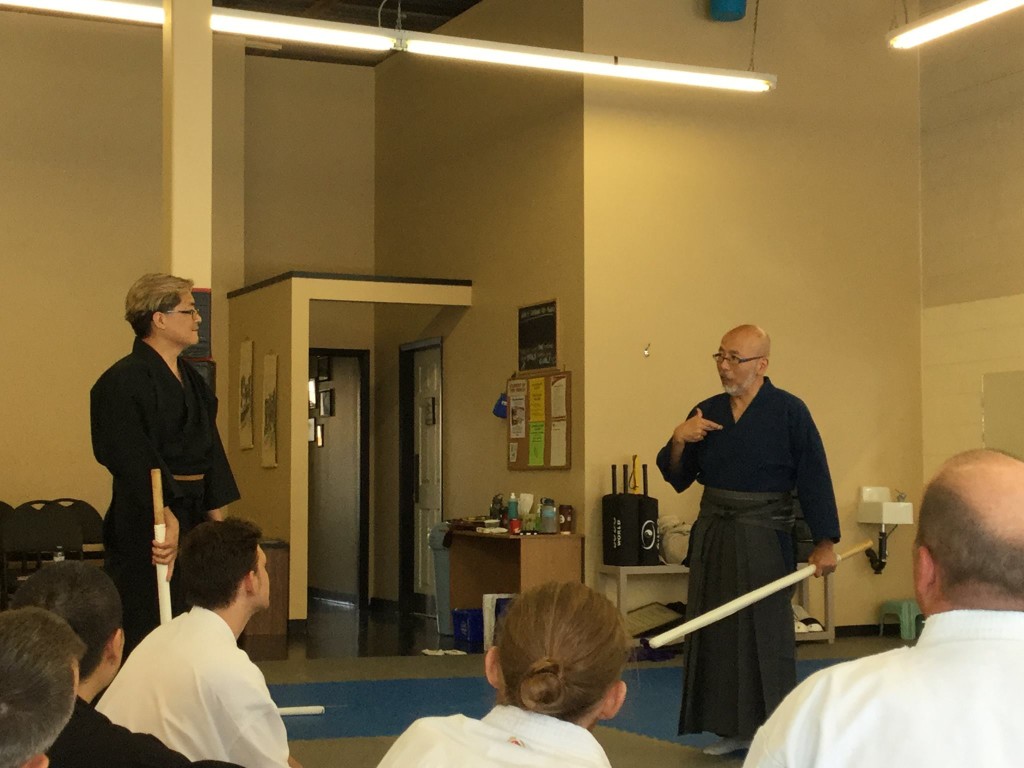 Our Headmaster Kajitsuka Sensei teaching us directly. Such one-on-one instruction is invaluable.
Our Headmaster Kajitsuka Sensei teaching us directly. Such one-on-one instruction is invaluable.
In between his trips to visit us, we stay in regular contact with Kajitsuka Sensei through video chats, emails, and Facebook.
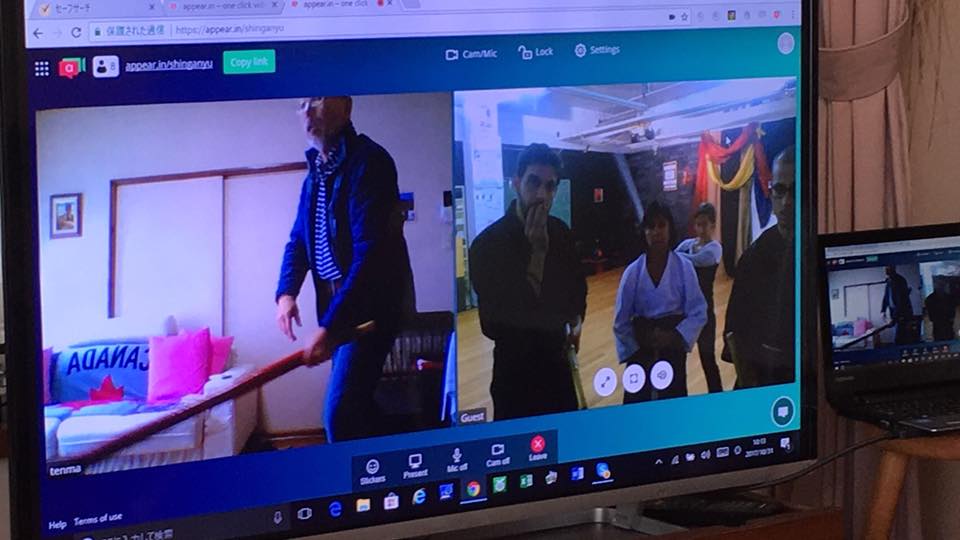 Kajitsuka Sensei is in constant communication with us. Such frequent interaction helps us immeasurably.
Kajitsuka Sensei is in constant communication with us. Such frequent interaction helps us immeasurably.
Our members also have the special opportunity to travel to Japan to visit Sensei and participate in the annual Yagyu Gasshuku, held in the historic Yagyu Village each September.
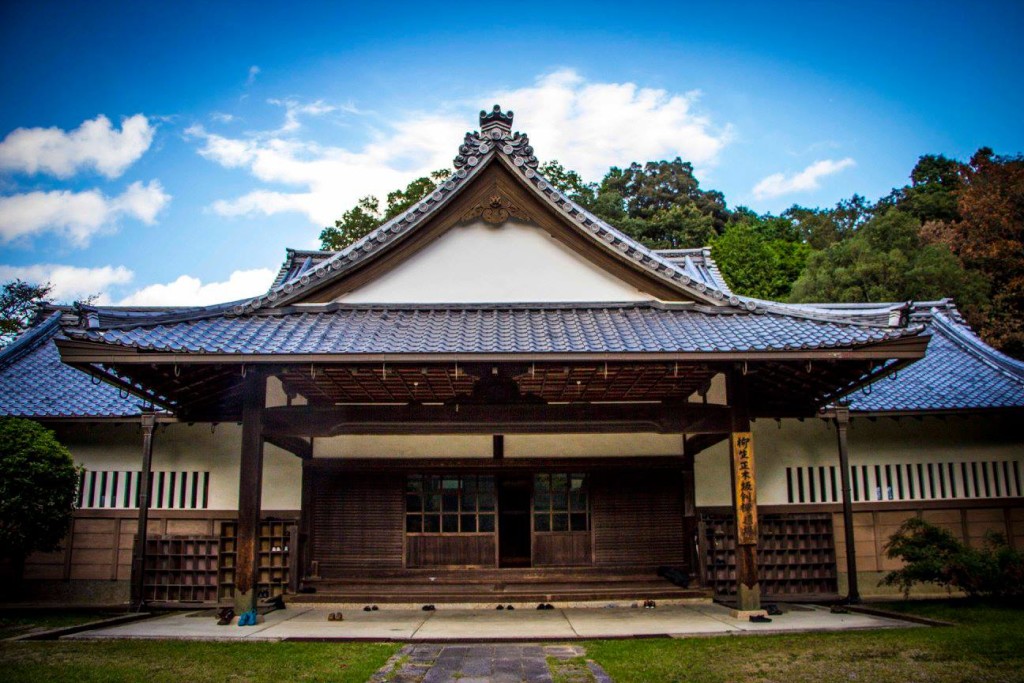 The beautiful Yagyu Mazakizaka Kenzen Dojo (柳生正木坂剣禅道場) on the grounds of the famous Yagyu Village.
The beautiful Yagyu Mazakizaka Kenzen Dojo (柳生正木坂剣禅道場) on the grounds of the famous Yagyu Village.
It is a rare chance to receive authentic training in a centuries-old environment, to truly experience the living tradition of the style.
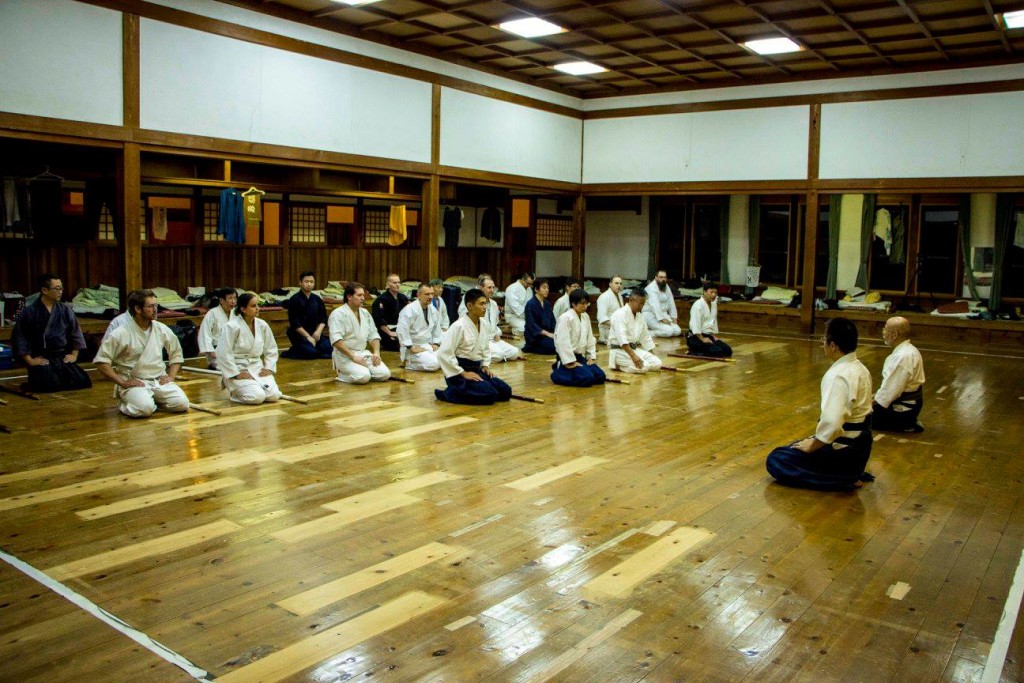 Members of Tokumeikan attend the annual Arakido Yagyu Gasshuku in Japan.
Members of Tokumeikan attend the annual Arakido Yagyu Gasshuku in Japan.
It is a great privilege for us to have this chance, a grand cultural immersion into the history and tradition of this legendary style.
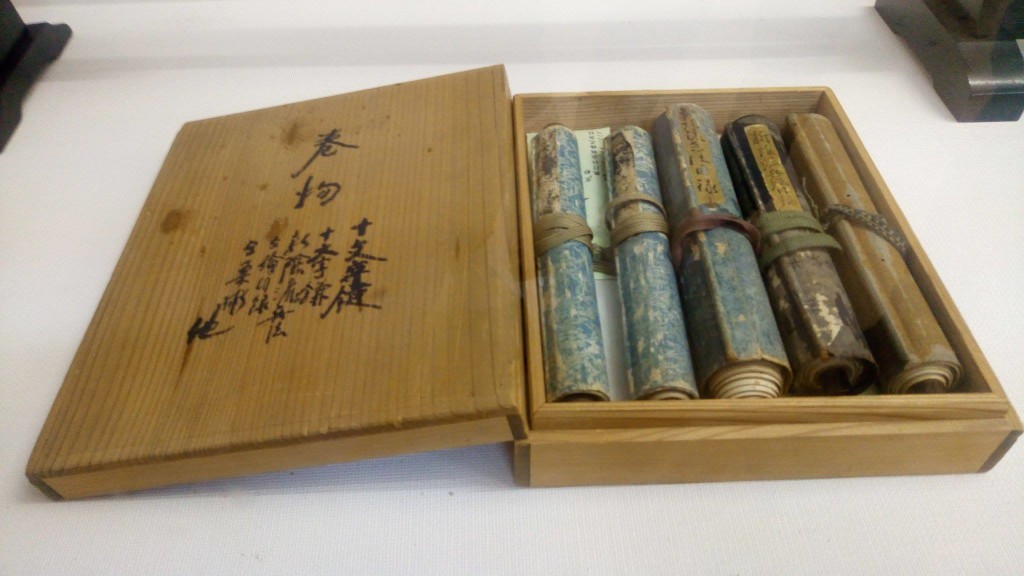 The scrolls containing all the secrets and knowledge of the art, handed down from Master to disciple for 500 years.
The scrolls containing all the secrets and knowledge of the art, handed down from Master to disciple for 500 years.
Here is Part 2 of a documentary about the 2017 Arakido Gasshuku at the Yagyu Village made by Hakan Kaplan of Turkey, one of the participants at the Gasshuku. Many Tokumeikan students (Scott, Dima, Josh, and Andrew) are interviewed in this video. For Part 1, go to our Media page.
Our members also have the opportunity to participate in regular classes (keiko) at Arakido’s dojos in Japan and experience what training is like in a real Japanese dojo.
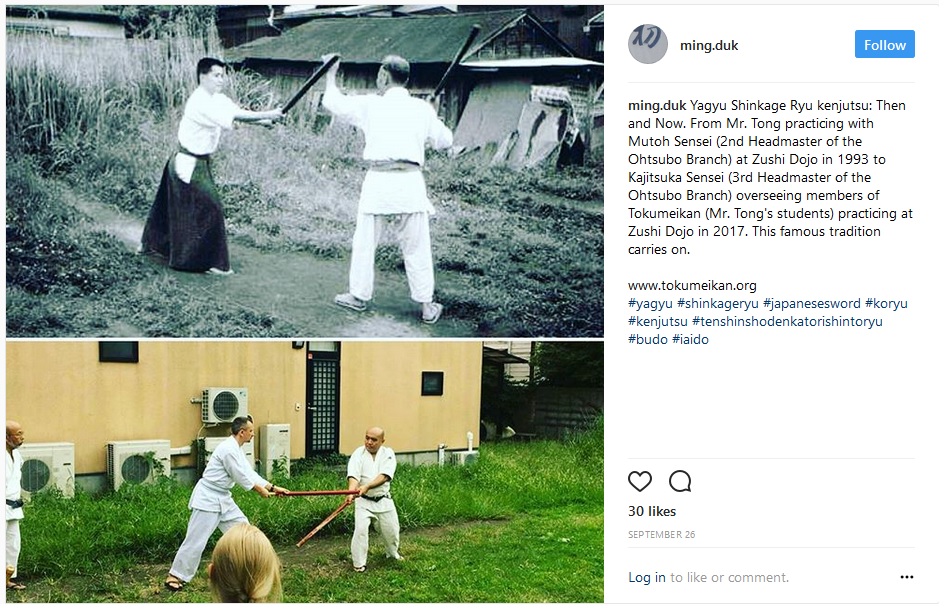 Tokumeikan students participating in a practice at the famous Zushi Dojo in 2017, the same dojo where our Founder Tong Sensei studied under Mutoh Sensei (the previous headmaster of the style) in the early 1990’s.
Tokumeikan students participating in a practice at the famous Zushi Dojo in 2017, the same dojo where our Founder Tong Sensei studied under Mutoh Sensei (the previous headmaster of the style) in the early 1990’s.
So if you would like to learn high-class, authentic Japanese sword-fighting and are of good character, then please consider joining our group.
———————————————————————————————————-
While we are primarily a sword school, we do have a small, dedicated group of practitioners that trains in Yagyu Shingan Ryu Taijutsu, a famous battlefield art with a large comprehensive curriculum of weapons and grappling techniques (classical jujutsu) that was created in the early 1600’s.
Kajitsuka Sensei demonstrating Yagyu Shingan Ryu Taijutsu in the famous “Nihon Budo” documentary. Video courtesy of Arakido.
We are very fortunate that Master Kajitsuka, who is the 11th lineal headmaster (soke) of Yagyu Shingan Ryu Taijutsu, has allowed us to be the official study group (keiko-kai) for Yagyu Shingan Ryu Taijutsu in Canada. We also feel very honoured and grateful to be one of only two official study groups in North America.
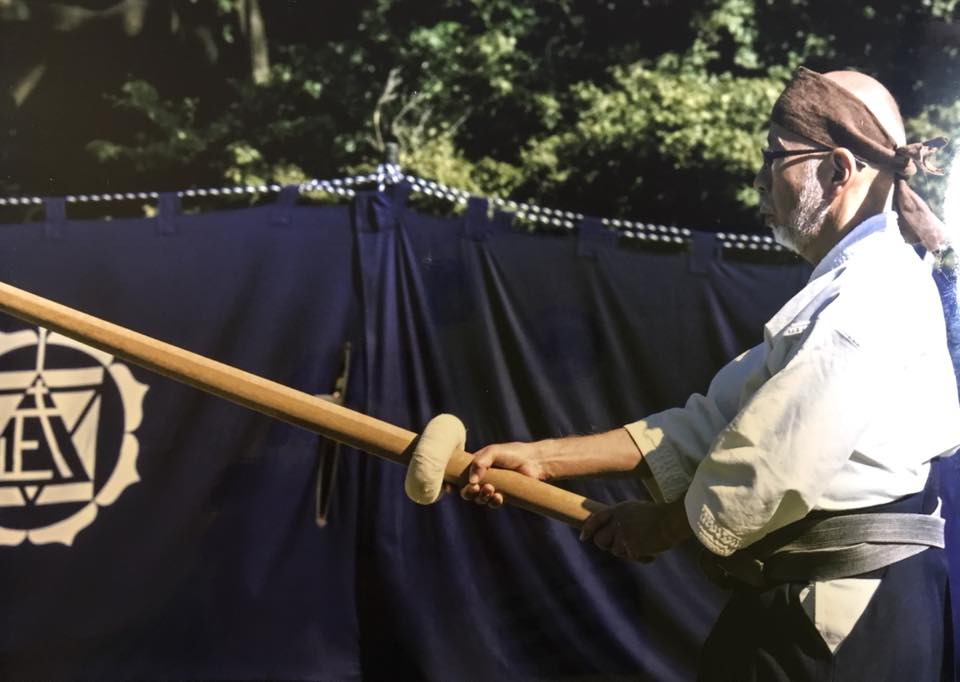 Kajitsuka Soke demonstrating Yagyu Shingan Ryu Taijutsu at the Meiji Jingu Embutaikai in Tokyo (2017).
Kajitsuka Soke demonstrating Yagyu Shingan Ryu Taijutsu at the Meiji Jingu Embutaikai in Tokyo (2017).
Master Kajitsuka has run numerous seminars over the years in Yagyu Shingan Ryu Taijutsu for our study group in Canada. You can read about them in our Past Events section.
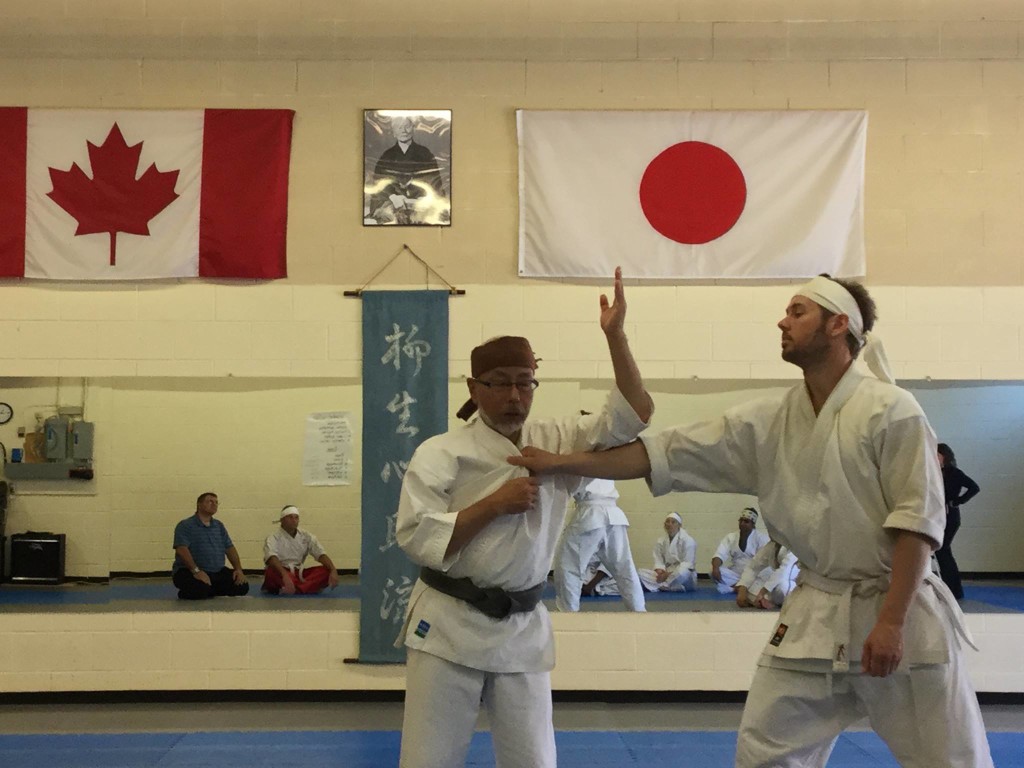 Kajitsuka Soke demonstrating Yagyu Shingan Ryu Taijutsu in the Greater Toronto Area (2016).
Kajitsuka Soke demonstrating Yagyu Shingan Ryu Taijutsu in the Greater Toronto Area (2016).
One of our study group members, Hector Bravo from Mexico, had the chance to participate in one of our seminars here in Canada and also interview Master Kajitsuka about Yagyu Shingan Ryu Taijutsu. You can read about his reflections on the seminar experience and his interview with Kajitsuka Soke here: Kajitsuka Sensei Seminar 2015. It is an enlightening read!

Our study group is small but it is growing. If you are interested in studying classical jujutsu and are of good character, please contact us.
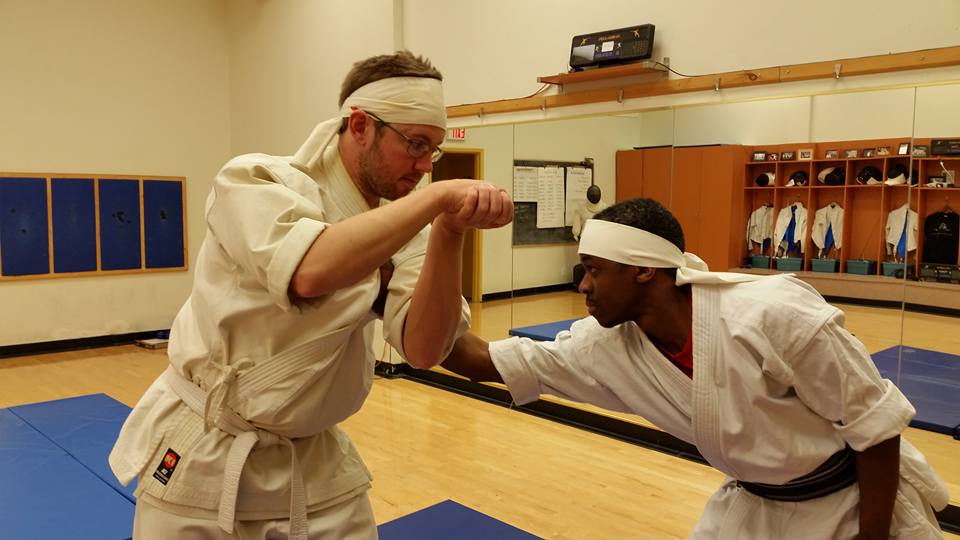
———————————————————————————————————-
For more information about Master Kajitsuka and his organization, please visit the official worldwide website for Arakido: Arakido.
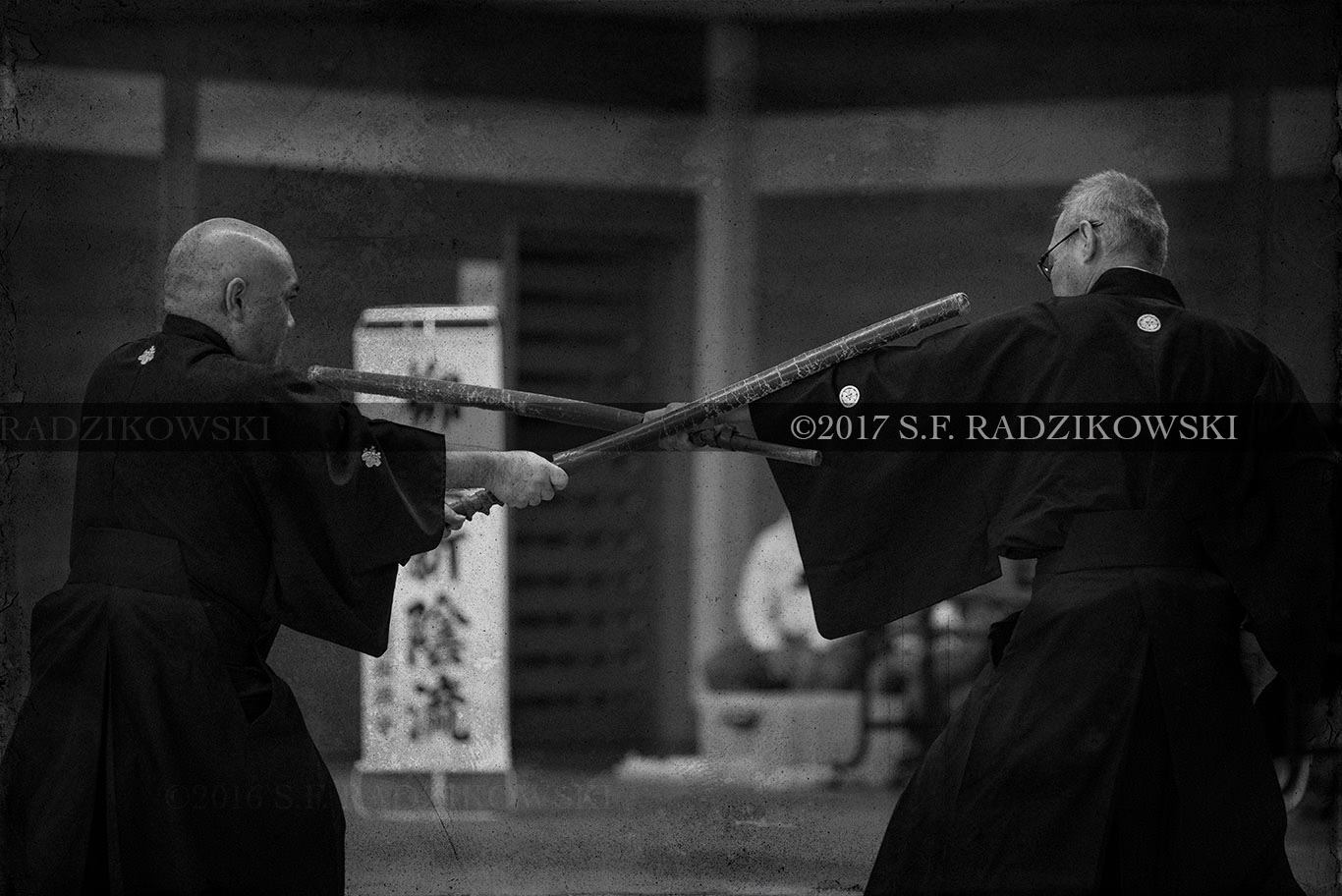 Members of Arakido demonstrate Yagyu Shinkage Ryu at the 2017 Asakusa Embutaikai in Tokyo. Photo courtesy of S. Radzikowski.
Members of Arakido demonstrate Yagyu Shinkage Ryu at the 2017 Asakusa Embutaikai in Tokyo. Photo courtesy of S. Radzikowski.
———————————————————————————————————-
Our Mission
We are a non-profit organization tasked to achieving the following goals:
1) developing and growing a strong, solid group of dedicated practitioners of our art
2) promoting awareness and understanding of the art of classical Japanese swordsmanship, specifically the art of Yagyu Shinkage Ryu kenjutsu
3) promoting awareness and understanding of the art of classical Japanese jujutsu and kobujutsu, specifically the art of Yagyu Shingan Ryu Taijutsu
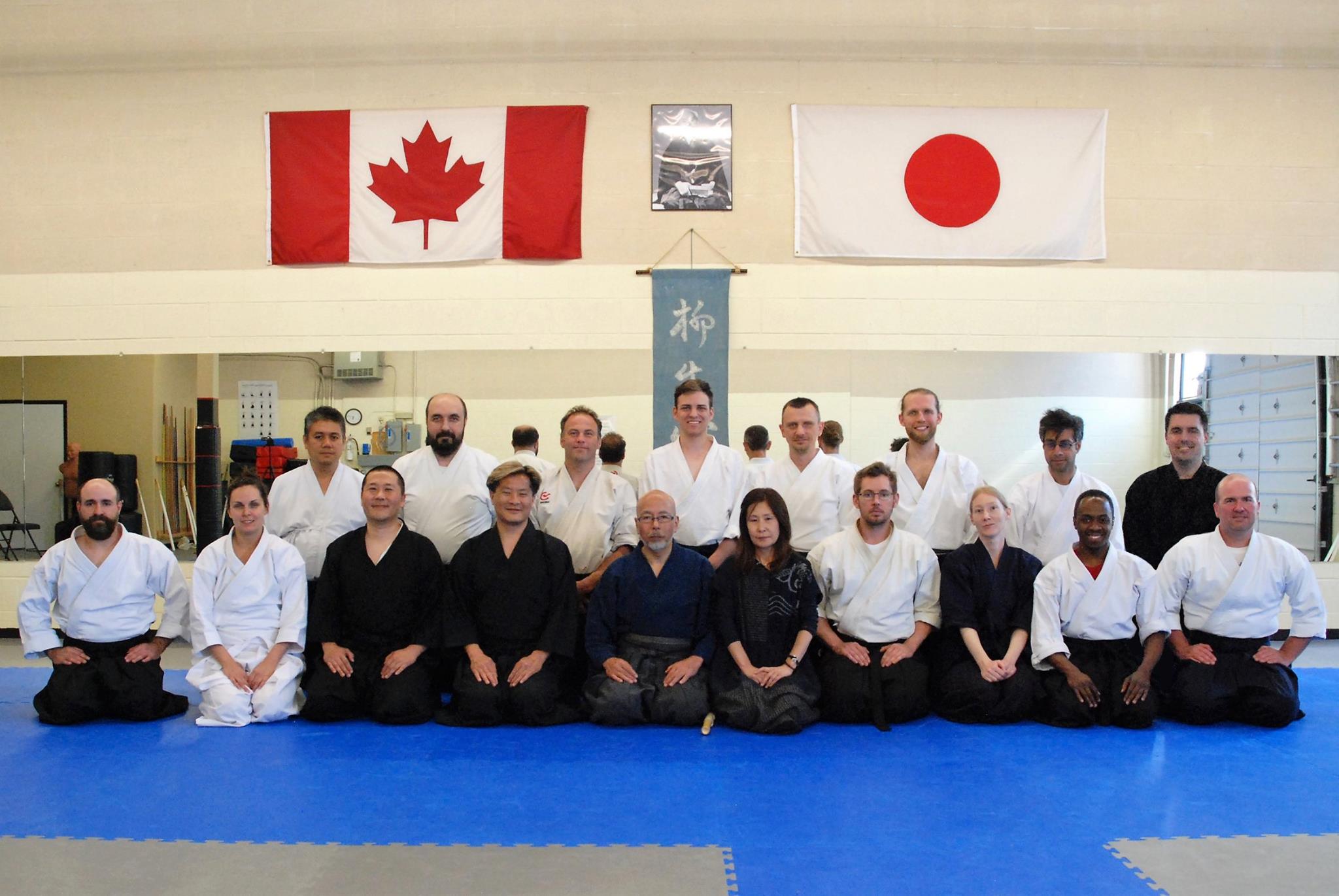 Kajitsuka Sensei visiting his Canadian keikokai in Orangeville in 2016.
Kajitsuka Sensei visiting his Canadian keikokai in Orangeville in 2016.
———————————————————————————————————-
Our Vision
At Tokumeikan, our pursuit is excellence. We have training of the highest standards. We study the rarest and most renowned of sword schools. We train with the best teachers in the world. Excellence is our passion.
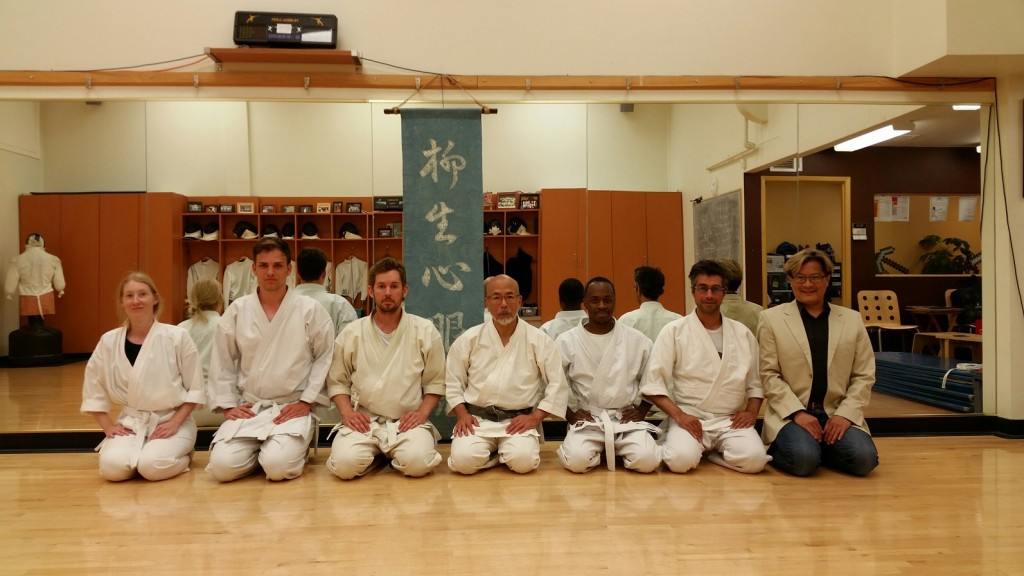 Kajitsuka Soke with his Canadian Yagyu Shingan Ryu keikokai in Toronto in 2016.
Kajitsuka Soke with his Canadian Yagyu Shingan Ryu keikokai in Toronto in 2016.
———————————————————————————————————-
Community Involvement
We teach classes and conduct seminars in kenjutsu at various dojos in the Greater Toronto Area (GTA). We also run workshops for theatrical and film organizations such as Rapier Wit Stage Combat School, at martial arts expos like MMA Expo, and at fan conventions such as Anime North.
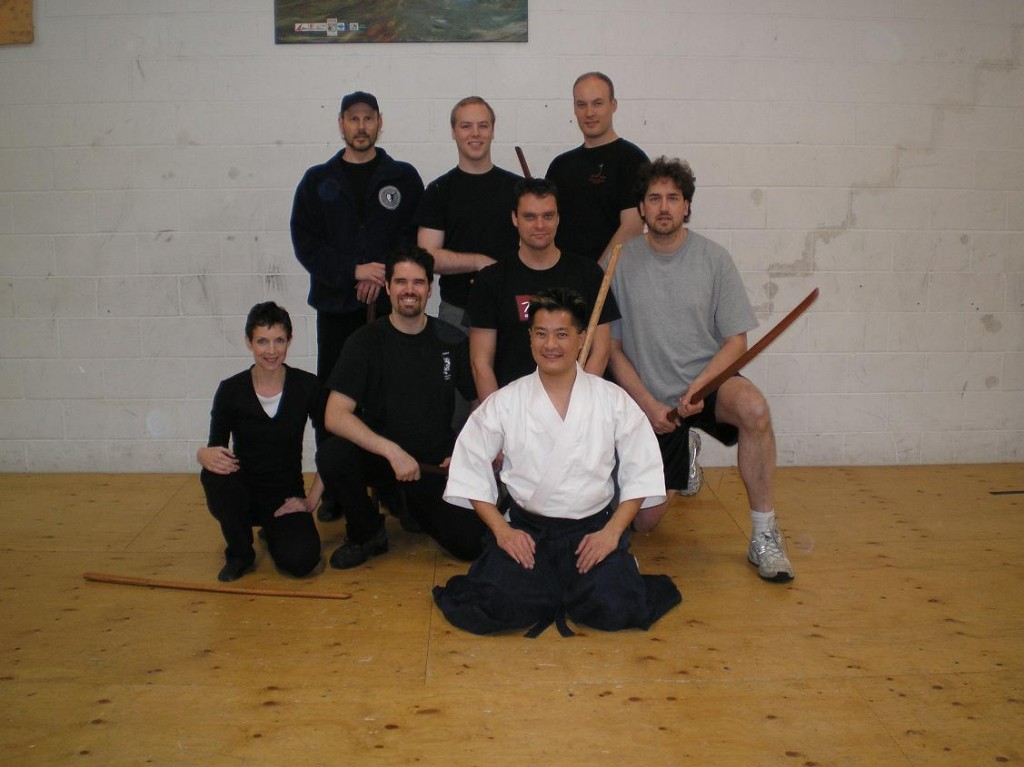 Tong Sensei conducting a workshop in Japanese swordfighting for actors and fight directors of screen and theatre productions at Rapier Wit School For Stage and Screen Combat in Toronto.
Tong Sensei conducting a workshop in Japanese swordfighting for actors and fight directors of screen and theatre productions at Rapier Wit School For Stage and Screen Combat in Toronto.
We perform public demonstrations twice a year at the Japanese Canadian Cultural Centre (JCCC) for their Spring and Fall Festivals. Honoured to be a part of the largest annual gathering of the Japanese community from Ontario and upstate New York, we have been performing there each year since 2005.
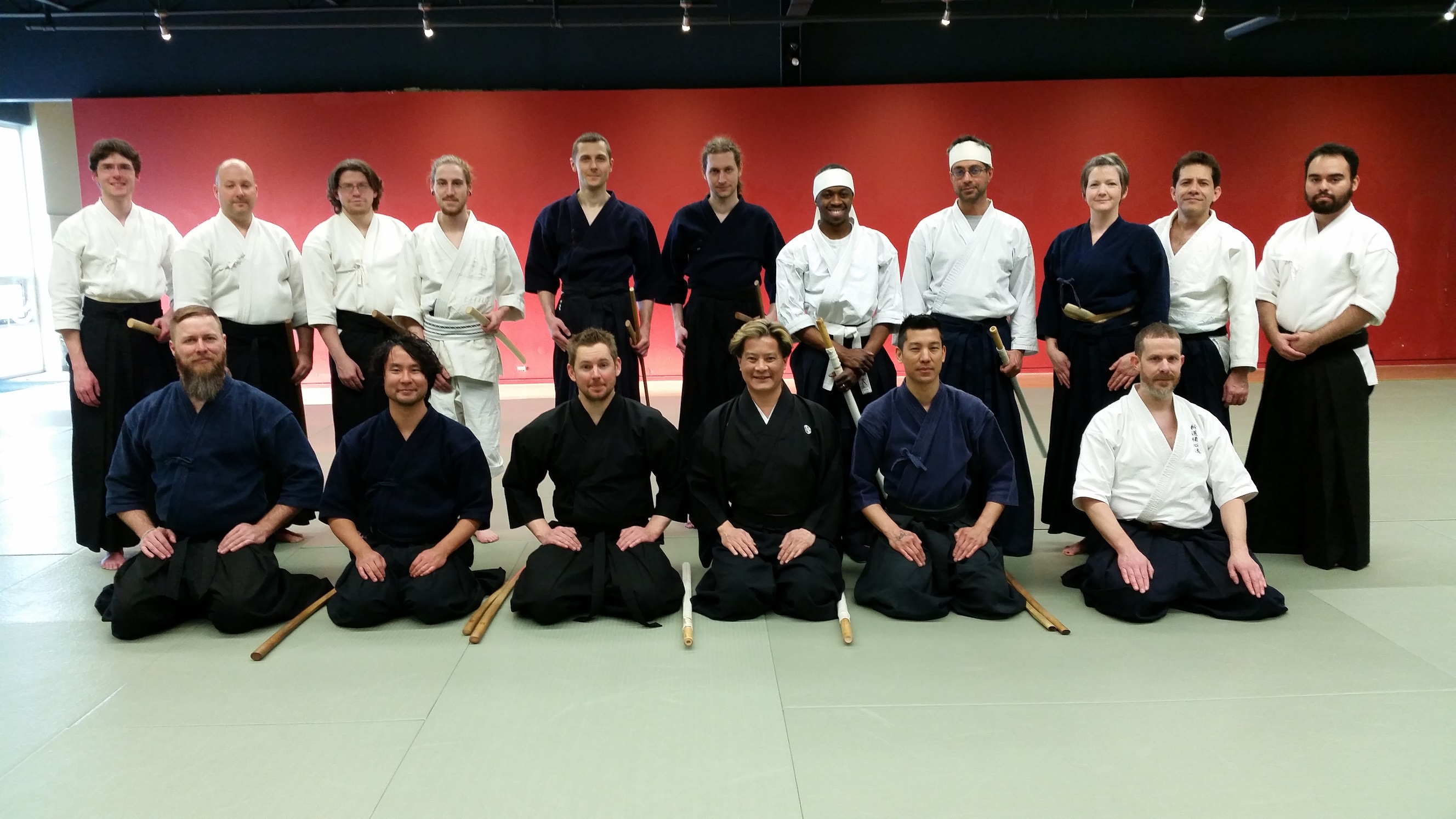 Haru Matsuri 2017 at the Japanese Canadian Cultural Centre (JCCC) in Toronto: the first Koryu Friendship Demo in Toronto! 😉 The participating groups from left to right: Tenshin Shōden Katori Shintō-ryū (Sugino-ha) (Jigan Dojo), Hyoho Niten Ichi-ryū (Toronto Niten Kai Kenjutsu Dojo), Yagyū Shinkage-ryū and Yagyu Shingan-ryu Taijutsu (Tokumeikan), and Takamura-ha Shindo Yoshin Ryu (Kangetsu Dojo).
Haru Matsuri 2017 at the Japanese Canadian Cultural Centre (JCCC) in Toronto: the first Koryu Friendship Demo in Toronto! 😉 The participating groups from left to right: Tenshin Shōden Katori Shintō-ryū (Sugino-ha) (Jigan Dojo), Hyoho Niten Ichi-ryū (Toronto Niten Kai Kenjutsu Dojo), Yagyū Shinkage-ryū and Yagyu Shingan-ryu Taijutsu (Tokumeikan), and Takamura-ha Shindo Yoshin Ryu (Kangetsu Dojo).
We also participate at various local charitable events such as McMaster University Fencing Club’s annual fencing tournament (a fundraiser for McMaster University Children’s Hospital) and Anime North (fund-raising for SickKids Hospital). And we demonstrate at important cultural events such as the Museums of Burlington’s Japanese Culture Day in 2014, which celebrated the 25th anniversary of the twinning of the two cities of Burlington and Itabashi, Japan. Tokumeikan is proud to be a part of these major cultural festivals and exhibitions of martial arts in the Greater Toronto Area. For more information about our community involvements, go here: Partnerships
———————————————————————————————————-
The Meaning of “Tokumeikan”
In Japanese, Tokumeikan means “The Hall of Bright Virtue”. It is an excellent name as it reflects our mission: to produce swordsmen who are both technically skilled and morally cultivated.
This is in accord with the old Samurai maxim of “bunbu ichi” – which literally translated means “military (matters), education (matters) are one” but has the approximate, general meaning of “the pen and the sword together”. What was important in the growth of the character of a warrior was not only martial skill but also an appreciation of literature, poetry and philosophy, notably ethics. They believed that such an appreciation would complete and balance the man, transforming him from a simple-minded, uncultured soldier into the ideal warrior: possessed of martial skill coupled with a refined aesthetic sense. It is this notion of the ideal warrior which we endeavor to create.
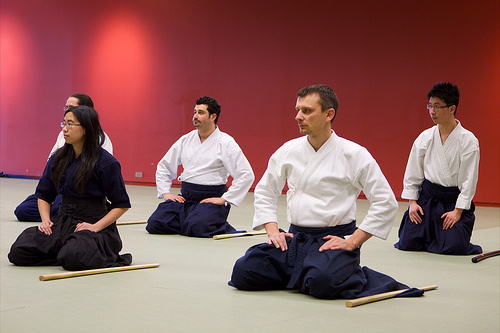
———————————————————————————————————-
The Story Behind the Words “Tokumei”
As a matter of fact, “Toku-mei” is actually the Japanese reading of the two kanji that make up our founder’s original Chinese first and middle names, given to him at birth. The kanji are interpreted as “bright virtue”, both in Chinese and Japanese. The meaning of the kanji is the same in both languages, since kanji are essentially pictograms and represent concepts and ideas.
Our founder thought the word “Tokumeikan” was a fitting name for his dojo: a place to learn and practice virtue. A “dojo” is, by its very definition in Japanese, a place to learn the Way. What “Way” is this? Naturally, in Japanese budo, the traditional Way of the samurai is Bushido, the Way of the Warrior. Yagyu Munetoshi (1529-1606), the second headmaster of the Yagyu style of swordsmanship, expressed it well:
“The ultimate in swordsmanship lies in the Five Virtues*. Always keep this in mind.”
The Five Virtues* ( 五常Gojyo ) that he is referring to are:
仁 Jin (benevolence, humanity): respect/love towards parents, brothers/sisters, and others
義 Gi (morality, loyalty): do the right thing
礼 Rei (courtesy, manners): show your richness inside
智 Chi (knowledge, intelligence, wisdom): make the right decision
信 Shin (trust, sincerity): be trusted by others
They are the Five Key Confucian Virtues. Confucian principles formed the philosophical basis of Bushido, as is evidenced by the strong focus on ethics that characterizes this culture of duty and service. Virtue is something our founder strongly believes in. And it is something that the samurai of the Edo Period strongly believed in as well, seeing that Bushido was a cultural construct of the Edo Period, an era of peace and stability that allowed the samurai to study The Way of the Sword in depth, to evolve the art and perfect it. Whereas training in swordsmanship in the Warring States Period was purely a functional and practical necessity, in the Edo Period it became refined and evolved into a truly spiritual endeavour. In the Edo Period, through The Way of the Sword, the samurai learned “to grow a soul”. Tokumeikan, the place of virtue, is an apt name that reflects this goal of spiritual cultivation.

———————————————————————————————————-
The “Mon” (Family Crest)
The “Mon” used by Tokumeikan is a valued family heirloom. It is the family crest (like a coat-of-arms) of Mr. Tong’s wife’s family. It has been passed down through the generations since the Middle Ages. Their line is of samurai ancestry, one of their ancestors having actually been a retainer (samurai) of the famous warlord, Oda Nobunaga, one of the “Three Unifiers of Japan”. The “mon” features a pair of eagle feathers.
Because of their bold, predatory nature, eagles and hawks were symbols of war and fighting spirit; therefore, it was common for military commanders to adopt these kamon. High-level members of the ancient Imperial Guard were known to use eagle and hawk feathers on their elaborate ceremonial crowns. (See ‘Family Crests of Japan’ ICG Muse, Inc.2001)

